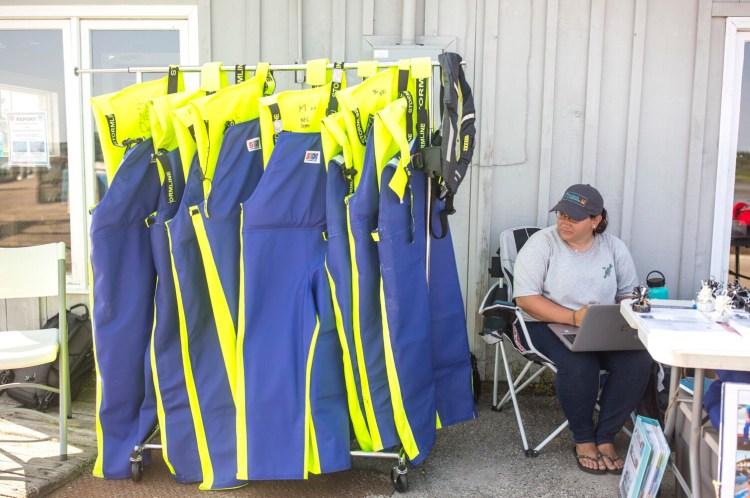A slip off a Massachusetts dock last winter made Pete Haskell realize the value of a lifejacket.
The retired Gloucester area marine supply manager owned a personal flotation device, of course, as the Coast Guard requires them on every boat, but like many fishermen, he kept it stashed safely aboard his skiff and rarely if ever actually wore it.
He realized his mistake when he felt himself go into shock after falling into the icy water between a clam float and a wall that cold December day. His cellphone immediately lost power and became useless. His clothing made it hard to swim. He had to pull himself back up the ladder to safety.
“It scared me, as I realized how fast you are in trouble,” Haskell said. “A lifejacket would’ve helped me float and get out. After this, it made me realize, I’ve got a lifejacket in the boat but I’m not wearing it. It made me realize how often and how quickly you could get into trouble.”
In April, Haskell bought a new Hyde Sportswear Wingman from Lifejackets for Lobstermen, a grant-funded work-safety project operated by the Northeast Center for Occupational Health and Safety.
“I fish in an 18-foot skiff, mostly by myself, and I wear it every time I go out now,” Haskell said.
Lifejackets for Lobstermen has sold more than 430 lifejackets to Maine and Massachusetts fishermen since April, traveling from port to port in two vans stocked with 11 different models of jackets and float aids to give fishermen a chance to see which style might work best for them.
With grant assistance, Lifejackets for Lobstermen can sell these personal flotation devices to Maine and Massachusetts lobstermen for half off their retail price. That brings the costs to fishermen down to $19-$120, depending on the style of vest preferred and the level of buoyancy.
The operation is making its last visits in Maine over the next month, with stops ranging from one day to four still planned in Wells, Five Islands, Southport, Boothbay, South Bristol, New Harbor, Round Pond, Cushing, Friendship, Tenants Harbor and Port Clyde.
DANGEROUS WORK
According to the National Institute for Occupational Safety and Health, lobster fishing deaths accounted for the highest number of occupational fatalities in East Coast fisheries from 2010 to 2014. Half of those were related to falls overboard. None of the recovered victims was wearing a lifejacket.
Between 2000 and 2016, unintentional falls overboard resulted in 204 fatalities in the U.S., according to the Centers for Disease Control. Of those, 18 were New England lobstermen.
The Northeast Center has worked with Massachusetts and Maine lobstermen since 2016 to understand why they don’t like to wear lifejackets. Fishermen have identified a number of potential barriers to use, including cost and a lack of variety, two factors that the center’s mobile operation is intended to address.
“We have discovered that choosing a lifejacket is really a matter of personal preference, so fishermen need to have a number of options to consider, as well as information on the various features that will likely meet their specific work needs,” said project coordinator Rebecca Weil.
Nicholas Martin of Cushing has been lobstering out of Pleasant Point Gut for more than 30 years. As a fisherman who makes safety a priority on his boat, Martin said it was an easy decision to buy a set of Stormline Flotation Bibs from Lifejackets for Lobstermen during its recent visit.
“The bibs were a little awkward for the first hour, then I got used to them and they’re really comfortable,” said Martin, whose wife shared the photo that the Lifejackets crew posted of him online with his in-laws. “My wife is happy I bought them.”
Send questions/comments to the editors.




Success. Please wait for the page to reload. If the page does not reload within 5 seconds, please refresh the page.
Enter your email and password to access comments.
Hi, to comment on stories you must . This profile is in addition to your subscription and website login.
Already have a commenting profile? .
Invalid username/password.
Please check your email to confirm and complete your registration.
Only subscribers are eligible to post comments. Please subscribe or login first for digital access. Here’s why.
Use the form below to reset your password. When you've submitted your account email, we will send an email with a reset code.